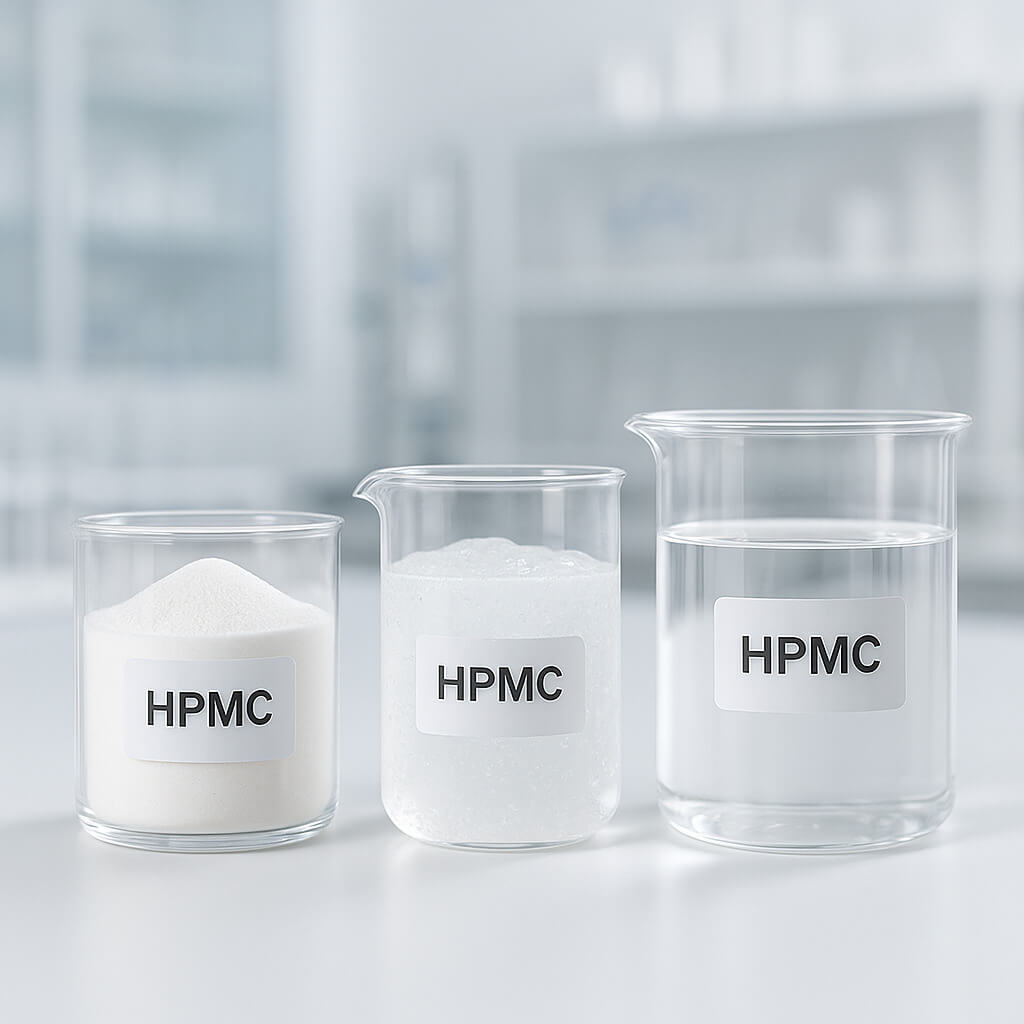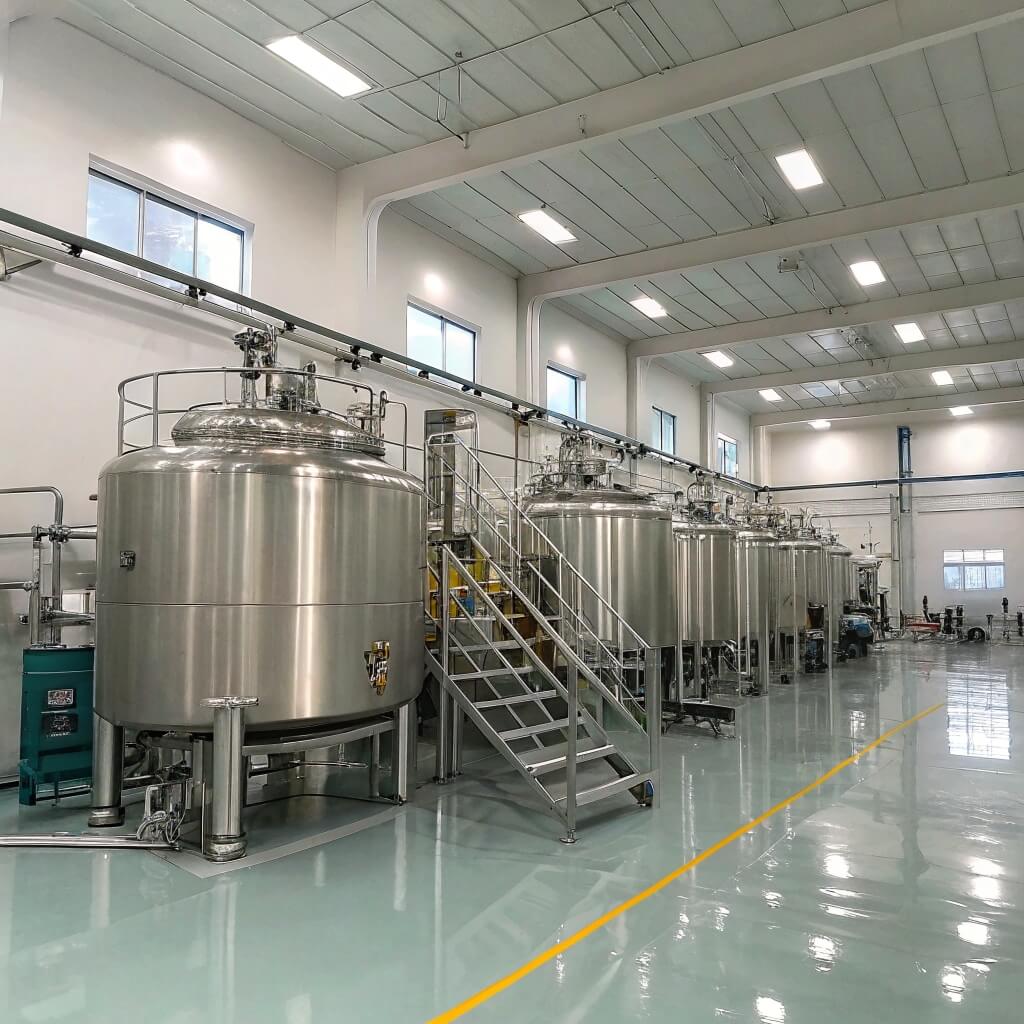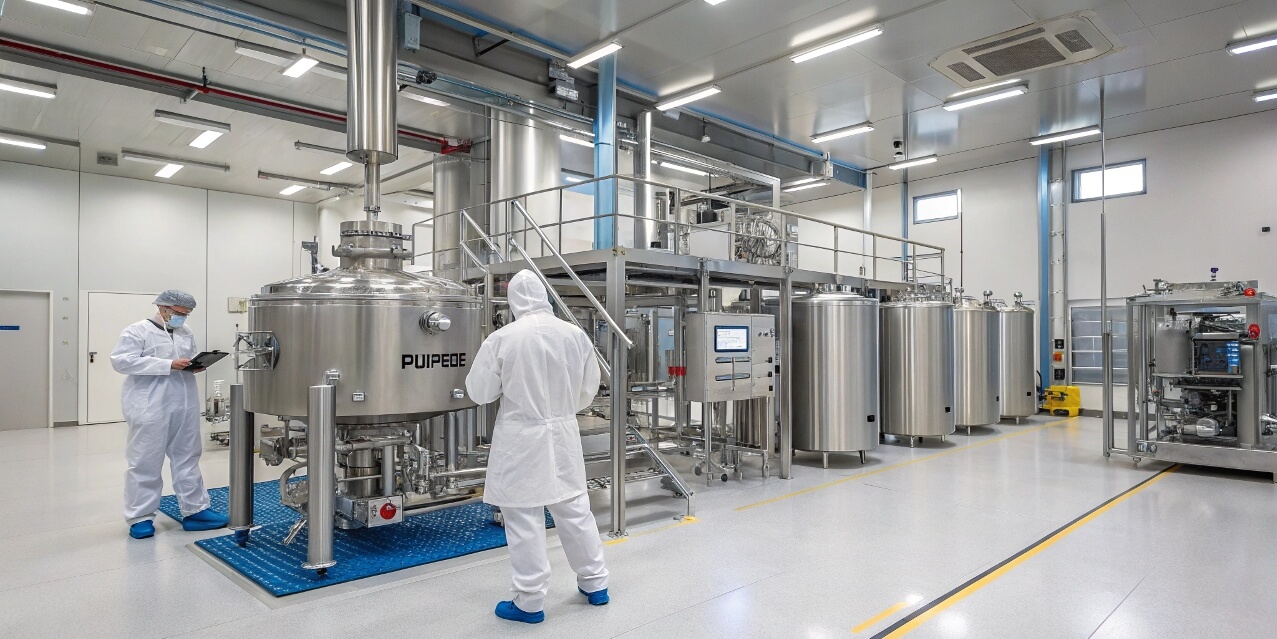Understanding how HPMC solubility varies in organic solvents is a key concern for many professionals in the pharmaceutical, food, and cosmetic industries. This article aims to dissect the nuances of HPMC, its solubility factors, and how they can influence the formulation process in diverse applications. Recognizing these solubility principles is not just a matter of academic interest; it has real-world implications in achieving product efficacy and stability. By the end of this article, you will have a clearer grasp of why HPMC solubility is crucial and how to effectively navigate its complexities.

1. What Is HPMC and Its Role in Formulations?
Hydroxypropyl Methylcellulose (HPMC) is a cellulose-derived polymer that has become indispensable in numerous formulations. But here’s the kicker: HPMC’s versatility lies in its ability to act as a thickener, binder, and emulsifier, making it invaluable across various sectors. In pharmaceuticals, for example, HPMC is widely utilized as an excipient in tablet formulations and controlled-release drug delivery systems. Its ability to enhance the properties of the product without altering its active ingredients sets it apart from other compounds.
The chemical structure of HPMC consists of hydroxypropyl and methoxy groups attached to a cellulose backbone, giving it unique solubility characteristics. These qualities enable it to dissolve in both aqueous and organic solvents, a feature that is particularly beneficial in diverse applications such as food coatings and cosmetic formulations. HPMC was first developed in the early 20th century and has since undergone significant advancements, which allow for various molecular weights that cater to different functionalities.
Moreover, the historical context of HPMC underscores its reliability and safety. In the food industry, for instance, it serves as a low-calorie thickener, maintaining the cosmetic appearance and mouthfeel without compromising dietary restrictions. Similarly, in cosmetics, it stabilizes emulsions, preventing ingredient separation. Therefore, understanding HPMC and its role is fundamental for professionals looking to optimize their formulations and ensure product effectiveness.
| Fonctionnalité | Description |
|---|---|
| Structure chimique | A cellulose derivative modified with hydroxypropyl and methoxy groups |
| Principales applications | Pharmaceuticals, food industry, cosmetics |
| Principaux avantages | Non-toxic, versatile, effective |
2. Why Is Understanding HPMC Solubility in Organic Solvents Important?
Understanding HPMC solubility in organic solvents is critical for formulating effective products across various industries. What’s the real story? Different solvents can significantly alter how HPMC behaves in a formulation, thereby impacting product stability, effectiveness, and texture. This is crucial for making informed choices about ingredient selection and formulation processes.
When HPMC is dissolved in organic solvents, it can interact differently compared to aqueous solutions. For example, many common organic solvents like ethanol or isopropanol alter the viscosity and texture of formulations. These changes might enhance the performance of HPMC in specific applications, such as in cosmetics where a smooth texture is desired, or in pharmaceuticals where controlled release is essential.
Moreover, solubility also affects the bioavailability of active ingredients in pharmaceutical formulations. If HPMC does not dissolve adequately in the chosen solvent, it can lead to inconsistent drug release profiles, which could compromise therapeutic efficacy. On the other hand, when solubility is achieved, it ensures improved mixing and uniformity, leading to more predictable performance.
In food technology, understanding HPMC’s solubility in organic solvents helps create better emulsions, allowing for improved product consistency and shelf-stability. The ability to select the right solvent not only enhances product performance but also aligns with regulatory requirements concerning food safety and quality.
Overall, grasping the importance of HPMC solubility in organic solvents is essential for formulators looking to develop high-quality, effective products that meet both consumer and regulatory demands.
| Importance | Explication |
|---|---|
| Product Stability | Solubility directly affects the overall product stability |
| Bioavailability | Inadequate solubility can lead to inconsistent drug release |
| Assurance qualité | Ensures compliance with regulatory standards |
3. What Are the Key Factors Influencing HPMC Solubility in Organic Solvents?
Several key factors influence the solubility of HPMC in organic solvents, and understanding these factors can lead to superior formulations. Ready for the good part? These factors include solvent polarity, temperature, and pH levels, each contributing uniquely to HPMC’s solubility dynamics.
First and foremost, solvent polarity plays a crucial role. HPMC is more likely to dissolve in polar solvents than in non-polar ones. For instance, organic solvents like ethanol and methanol are polar and facilitate better solubility compared to hexane, a non-polar solvent. This fundamental characteristic must guide formulators in selecting the appropriate solvent to achieve the desired viscosity and texture.
Temperature also impacts solubility significantly. Increasing the temperature typically enhances the solubility of HPMC, allowing for a faster dissolution rate. This is particularly useful during the formulation process, where time efficiency is a concern. Formulators often utilize heated solvents to expedite mixing and ensure complete dissolution, especially in large-scale production.
Lastly, pH levels can alter HPMC’s solubility, especially in acidic or highly alkaline conditions. Extreme pH may lead to variations in solubility performance and potentially compromise the integrity of the formulation. Thus, maintaining an optimal pH throughout the formulation process is essential for achieving reliable product outcomes.
Comprehending these key factors enables formulators to troubleshoot issues and optimize formulations effectively, ensuring that HPMC delivers the expected benefits in diverse applications.
| Facteur | Influence |
|---|---|
| Polarité du solvant | Higher solubility in polar solvents |
| Température | Increased temperature enhances dissolution rate |
| pH Levels | Extreme pH values impact solubility |
4. What Types of Organic Solvents Are Commonly Used with HPMC?
When considering HPMC solubility, the choice of organic solvents is paramount. This is where it gets interesting: different solvents present varying degrees of interaction with HPMC, influencing the final formulation’s texture and performance.
Common organic solvents include ethanol, methanol, isopropanol, acetone, and ethyl acetate. Each solvent carries distinct properties that can either enhance or hinder HPMC solubility. Ethanol is widely recognized for its ability to dissolve HPMC efficiently and is often the solvent of choice in pharmaceutical applications. This characteristic allows for effective drug delivery systems while maintaining product stability.
Isopropanol, another polar solvent, is popular in personal care formulations. Its robust dissolving power helps achieve desired viscosity and texture in creams and lotions, providing consumers with a high-quality sensory experience. However, formulators must balance between performance and safety, as not all consumers prefer products with certain solvents due to potential skin irritation.
For specific applications requiring rapid evaporation, acetone might be employed, particularly in coatings and adhesives. Its low boiling point permits quick drying processes, making it advantageous in scenarios where time is crucial. However, using acetone requires careful consideration of its effects on HPMC properties, as strong solvents can increasingly influence final product characteristics.
Choosing the right organic solvent for HPMC is not merely about solubility; it encompasses understanding the end-use applications and consumer preferences. By weighing benefits against limitations, formulators can optimize HPMC-based products for a diverse range of industries and applications.
| Type de solvant | Caractéristiques |
|---|---|
| Éthanol | High solubility, commonly used in pharmaceuticals |
| Isopropanol | Effective in personal care formulations, good viscosity |
| Acétone | Rapid evaporation, useful in coatings and adhesives |
5. How Does HPMC Molecular Weight Affect Its Solubility in Organic Solvents?
The molecular weight of HPMC plays a critical role in determining its solubility in organic solvents. But here’s the kicker: higher molecular weight HPMC grades behave differently in solution compared to their lower molecular weight counterparts. Understanding this distinction helps formulators select the right grade for their specific applications.
Low molecular weight HPMC grades generally exhibit rapid solubility and are ideal for applications requiring a quick dissolution rate. For instance, in immediate-release pharmaceutical formulations, a lower molecular weight HPMC can enhance the initial drug release, important for therapeutic effectiveness.
Conversely, high molecular weight HPMC grades tend to produce more viscous solutions, advantageous for formulations needing thicker consistency or prolonged release properties. In sustained-release drug formulations, for example, high molecular weight HPMC can effectively control the release rate of an active ingredient over an extended period, thereby optimizing therapeutic outcomes.
However, the trade-off is that higher molecular weight grades may dissolve more slowly, requiring more time for complete solubility. This characteristic is something formulators need to factor in when planning the mixing and processing stages of production.
In practice, understanding the influence of molecular weight on solubility can help formulators create tailored products that meet precise application requirements, improving both performance and consumer satisfaction.
| Poids moléculaire | Solubility Characteristics |
|---|---|
| Faible poids moléculaire | Rapid solubility, ideal for immediate-release |
| Medium Molecular Weight | Balanced properties for a variety of applications |
| poids moléculaire élevé | Creates viscous solutions, suitable for sustained release |
6. How to Test HPMC Solubility in Organic Solvents Effectively?
Testing HPMC solubility in organic solvents is an essential step in formulation development. Ready for the good part? Utilizing a systematic approach can help ensure accurate and reliable results.
Begin by selecting a variety of HPMC grades, which can include low, medium, and high molecular weight options. This selection enables a broader understanding of how different grades perform in organic solvents. Prepare multiple test solutions by dissolving a specific amount of HPMC in an organic solvent while varying temperature conditions.
Employ consistent methods for heating and stirring the solution. Using a calibrated thermometer will help maintain the desired temperature throughout the process, ensuring that any variations in solubility are due to the HPMC grade and not external factors. Additionally, consider utilizing stirring equipment capable of providing consistent agitation, which aids in promoting uniform dissolution.
After the solutions have been mixed for a set time, evaluate solubility visually. This can involve observing whether any undissolved particles remain or if a clear solution has formed. Quantitative methods may also be utilized for more precise measurements of solubility through spectrophotometric analysis.
Finally, document the results, making note of the HPMC grade, solvent type, and specific conditions during testing. Analyzing this data will provide insights into which grades are suitable for intended applications and help troubleshoot any potential formulation challenges.
Implementing a thorough testing strategy ensures that HPMC performs optimally within organic solvent-based formulations, contributing to enhanced product quality.
| Paramètre de test | Action recommandée |
|---|---|
| Select HPMC Grades | Include various molecular weights |
| Controlled Heating | Maintain consistent temperature |
| Inspection visuelle | Observe for clarity versus undissolved particles |
7. What Are the Applications of HPMC in Organic Solvent-Based Formulations?
HPMC’s versatility extends across several industries through its various applications, particularly in organic solvent-based formulations. What’s the real story? The unique properties of HPMC make it highly valuable across pharmaceuticals, food technology, and personal care sectors.
In pharmaceuticals, HPMC serves as an essential excipient in the development of sustained-release formulations. Drugs combined with high molecular weight HPMC demonstrate controlled release characteristics, ensuring that active ingredients are delivered over a sustained period. This property is crucial for maintaining therapeutic effectiveness and enhancing patient adherence.
The food industry leverages HPMC as a thickening agent in sauces, dressings, and even gluten-free products. Its ability to enhance texture while maintaining a low-calorie profile resonates with consumer demands for healthier options. HPMC’s emulsifying capabilities also allow for stable mixtures in food formulations, crucial for products requiring smooth textures without separation.
In personal care products, HPMC contributes to the creation of creams, lotions, and gels. Its role as a stabilizer ensures that oil and water components remain homogenized, creating a pleasant sensory experience for consumers. Additionally, HPMC can enhance the spreadability and application ease, factors that significantly influence user experience.
These varied applications underscore HPMC’s significance in achieving effective formulations that meet consumer desires while adhering to industry standards, showcasing its invaluable role across multiple sectors.
| Industry Sector | Applications clés |
|---|---|
| Médicaments | Sustained-release formulations |
| Food Technology | Thickening agents and emulsifiers |
| Produits de soins personnels | Stabilizers in creams and lotions |
8. What Are the Safety Considerations When Using HPMC in Organic Solvents?
Safety is paramount when it comes to utilizing HPMC in organic solvents. But here’s the kicker: understanding the safety data related to HPMC and the solvents being used can prevent potential issues in formulation processes.
First, it’s imperative to be familiar with the toxicity and regulatory guidelines associated with both HPMC and the solvents employed. HPMC itself is generally recognized as safe (GRAS) by the FDA; however, the safety profile can vary depending on the specific solvent used in conjunction with HPMC. For instance, some organic solvents may carry health risks due to flammability or inhalation concerns. It’s crucial to thoroughly assess Material Safety Data Sheets (MSDS) for each solvent to understand their handling and storage requirements.
Proper handling procedures must also be enforced to minimize exposure. This can involve wearing appropriate personal protective equipment (PPE), such as gloves and safety goggles, particularly when working in scaled-up production settings. Adequate ventilation during mixing and processing is essential for preventing inhalation of potentially toxic fumes.
Lastly, training all personnel involved in the formulation process on safety protocols is vital to fostering a safety-conscious work environment. By implementing stringent safety measures, manufacturers can mitigate risks and ensure that HPMC-based formulations are not only effective but also safe for end consumers.
Understanding these considerations plays a significant role in assuring the overall safety and quality of the final products while safeguarding worker health.
| Safety Consideration | Lignes directrices |
|---|---|
| Toxicity Assessment | Review MSDS for each solvent |
| Proper Handling Procedures | Use appropriate PPE and ensure adequate ventilation |
| Personnel Training | Train staff on safety protocols and emergency procedures |
9. What Trends Are Shaping the Use of HPMC in Organic Solvents?
The landscape of HPMC use in organic solvents is continually evolving, influenced by several important trends. Ready for the good part? One prominent trend is the increasing consumer demand for clean-label and natural formulations. Manufacturers are striving to find effective, safe, and transparent ingredients like HPMC that align with these consumer expectations.
Additionally, sustainability is emerging as a pressing trend within the industry. Companies are increasingly looking to reduce their environmental impact and engage in more sustainable practices. Research and innovations around more eco-friendly solvents are resulting in formulations that minimize harm to the environment while maintaining product performance, leading to the development of sustainable HPMC options.
Technological advances also play a significant role in shaping how HPMC is deployed in formulations. Innovations in processing techniques and formulation strategies enable manufacturers to create new products that were previously unattainable, allowing for enhanced solubility profiles and tailored applications in various industries. This adaptability means that formulations can now cater to more specific consumer needs.
Lastly, regulatory changes are also shaping the future landscape of HPMC usage. As governments and regulatory bodies impose stricter guidelines for food safety, pharmaceuticals, and cosmetics, manufacturers must remain informed and agile in compliance matters. Keeping abreast of these trends will ensure that formulators remain competitive while delivering high-quality products to consumers.
The interconnected nature of these trends underscores the importance of strategic planning and continuous innovation in HPMC formulary applications.
| S'orienter | Impact on HPMC Usage |
|---|---|
| Clean-label Consumer Demand | Drives the need for safe, transparent ingredients |
| Durabilité | Encourages eco-friendly formulation practices |
| Technological Innovation | Enables creation of more effective and tailored products |
| Regulatory Changes | Requires adaptability and compliance improvement |
10. Where Can You Find Reliable Resources on HPMC and Solubility Charts?
Sourcing reliable HPMC and accurate solubility charts is vital for professionals engaged in formulations. What’s the real story? Accessing trustworthy resources can dramatically affect product quality and efficacy.
Reputable suppliers are often the best starting point, as many established companies provide not only HPMC but detailed solubility charts on their products. These resources typically include solubility characteristics across various solvents and conditions, offering valuable insights during formulation development.
Additionally, industry databases and chemical sourcing platforms can serve as a compendium of information, providing formulators access to a vast array of data regarding HPMC and its performance in various conditions. Entities such as the International Journal of Pharmaceutics and other trade publications often publish studies concerning solubility, enhancing understanding through scientific research.
Networking at industry conferences can also yield significant benefits, as seminars often cover new findings and alternative formulations involving HPMC, showcasing innovative approaches from peers and experts in the field.
Lastly, joining relevant professional organizations dedicated to chemical manufacturing, pharmaceuticals, or food technology can enhance opportunities for collaboration and information exchange, ultimately leading to meaningful advancements in product development.
By leveraging these resources, manufacturers can ensure they are informed about HPMC’s capabilities and obtain valuable data for more efficient formulation processes.
| Resource Type | Description |
|---|---|
| Fournisseurs réputés | Providers offer HPMC and solubility data |
| Database and Journals | Scientific publications and databases provide research findings |
| Industry Conferences | Opportunities for networking, knowledge exchange |
Rubrique FAQ
Q1 : Qu'est-ce que l'HPMC ?
HPMC (Hydroxypropyl Methylcellulose) is a cellulose-derived polymer utilized as a thickening, binding, and emulsifying agent across various industries.
Q2 : How does HPMC solubility work in organic solvents?
HPMC solubility in organic solvents is affected by factors such as solvent polarity, temperature, and pH levels, each influencing its performance in formulations.
Q3 : What types of organic solvents are compatible with HPMC?
Common solvents include ethanol, methanol, and isopropanol, each providing different characteristics essential for effective formulations.
Q4 : How does HPMC molecular weight influence solubility?
Higher molecular weight HPMC grades dissolve more slowly but create thicker solutions, while lower molecular weight grades dissolve quickly, offering rapid relief in pharmaceutical applications.
Q5 : What safety considerations should be taken when using HPMC in organic solvents?
Safety considerations include understanding toxicity data for both HPMC and solvents, ensuring proper handling, and training personnel on safety protocols.




